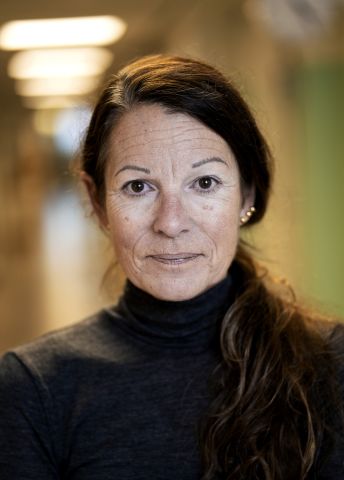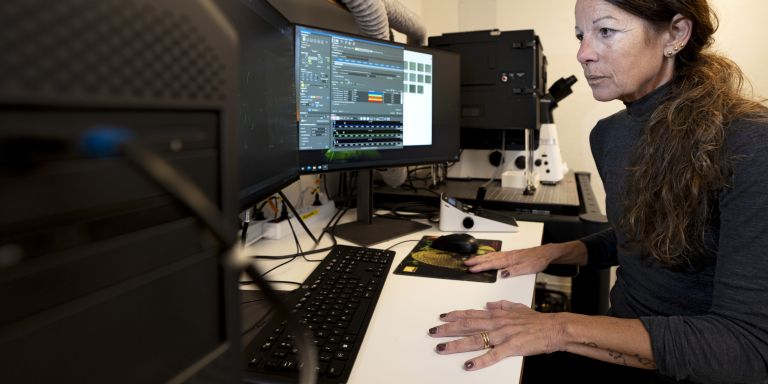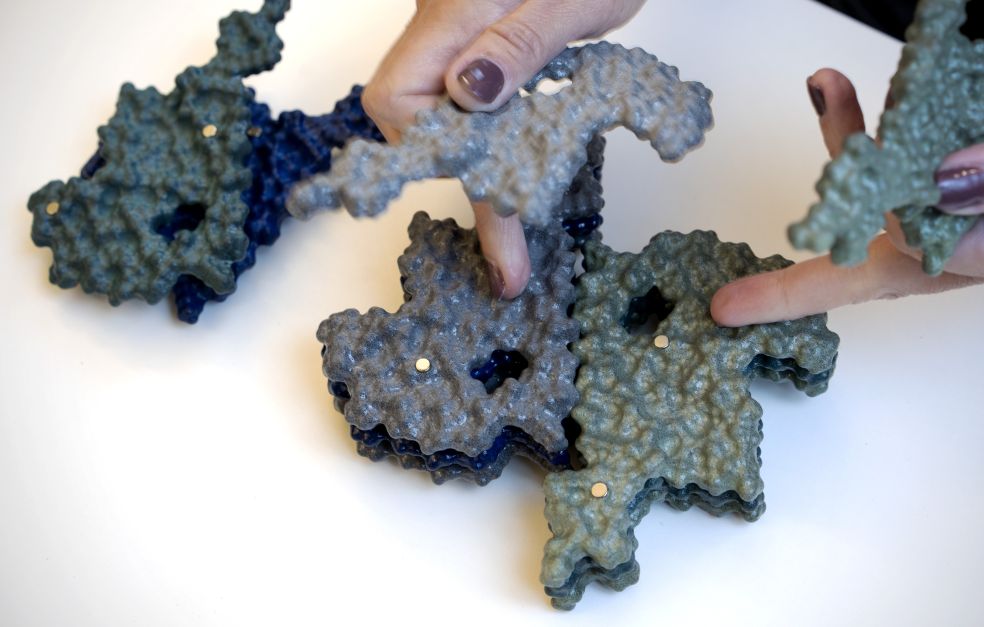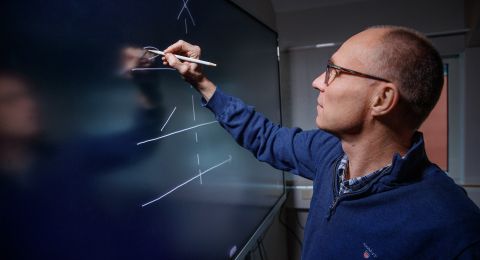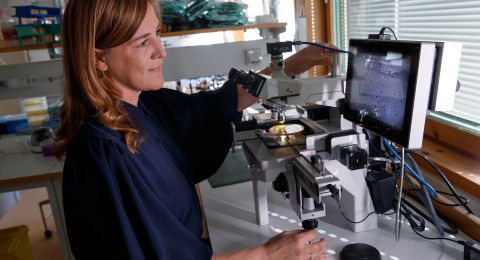Over the past thirty years, Pernilla Wittung Stafshede has revealed important knowledge about roles of proteins in human health. As a Wallenberg Scholar, Wittung Stafshede is now focused on achieving a breakthrough for one of healthcare’s greatest challenges: finding new ways to address some of the brain’s most severe diseases, such as Parkinson’s and Alzheimer’s.
Pernilla Wittung Stafshede
Professor of Chemical Biology
Wallenberg Scholar
Institution:
Chalmers University of Technology
Research field:
Protein misfolding and amyloid formation; copper-binding proteins
Proteins are involved in a variety of vital processes in our bodies. Many are well understood, but there are still plenty of unanswered questions around protein function and dysfunction.
It is these questions that fascinate Wittung Stafshede, Professor of Chemistry at Chalmers University of Technology. She has devoted her entire research career to solving some of the puzzles connected to how proteins work. But she is also looking for answers to what happens when proteins do not work as they should, and instead play a decisive role in diseases, especially neurodegenerative diseases such as dementia, Huntington’s and ALS that break down nerve cells.
“The population is ageing, and many people are likely to acquire dementia diseases that currently have no cure, such as Parkinson’s and Alzheimer’s. This is a huge problem that only more basic research can tackle, and it’s one of the big driving forces in my work,” she says.
Focus on protein misfolding
Wittung Stafshede, who is also a member of the Royal Swedish Academy of the Sciences (KVA) and the Royal Swedish Academy of Engineering Sciences (IVA), is keen that research should be made clear and comprehensible to all. To explain her new project, Wittung Stafshede has placed two items on the table in front of her. One of them is a Rubik’s Snake, a twistable puzzle made famous in the 1980s, which she uses to show how proteins fold. Next to this are some 3D-printed, grooved plates tightly packed together that illustrate how protein folding can go wrong, forming clumps that cause problems in cells.
She lifts them up and explains:
“Proteins need to fold into their correct shapes to function properly. But for some reason they sometimes misfold. This can cause proteins to clump together in what are known as amyloids: long, insoluble fibers in which proteins are packed on top of each other, often referred to as amyloid plaque. Amyloid fibers cause multiple problems in cells, ultimately leading to cell death in the brain. There are about 50 different diseases linked to amyloids, and to combat them we need to understand why this misfolding happens,” Wittung Stafshede says.
Today, there are a wide variety of theories about amyloid processes, but few definite answers. One recent discovery, which Wittung Stafshede’s research group was onto early, is that amyloids appear to function as low efficient enzymes that catalyze – or drive – chemical reactions. This activity has so far only been investigated for a small number of amyloid fibers, but it has been identified in amyloids that form in Parkinson’s and Alzheimer’s.
Breakthroughs could pave the way for new drugs
It is this new link between amyloids and chemical activity that Wittung Stafshede’s research group will focus on.
“Our group has conducted several tests showing that the presence of amyloids can chemically alter metabolites: small chemical substances involved in cellular metabolism. We’re now taking the next step to understanding the underlying mechanisms; which chemical reactions can be accelerated by amyloids and what relevance does this have for the progression of diseases? Demonstrating that amyloids change important metabolites in the body would be a breakthrough in the understanding of neurodegenerative diseases, which in turn could pave the way for completely new ways to fight them,” Wittung Stafshede explains.
Her laboratory is a fully-blown protein factory. Several hundred milligrams of various kinds of proteins are produced there every week – and they will come in handy for the new project.
Demonstrating that amyloids change important metabolites in the body would be a breakthrough in the understanding of neurodegenerative diseases, which in turn could pave the way for completely new ways to fight them.
Her research group will examine the catalytic properties of amyloids in test tubes, and test promising reactions directly in living nerve cells. A major focus of the work will be on the Parkinson’s protein alpha synuclein, but students will also investigate catalytic activity in a variety of other amyloidogenic proteins.
“If we are to solve the riddle of people’s incurable dementias, we need to tackle the unanswered questions from different angles. We’re currently investigating properties of amyloids that were previously unknown, and I hope that this will lead to new targets for drug development,” she says.
Research for health
Wittung Stafshede tested real research for the first time when she was a chemical engineering student at Chalmers. For the final year of her program, she had the opportunity to be an exchange student in a research laboratory at Imperial College in London, an experience that left a lasting impression.
“It was incredibly exciting to explore questions that no one else knew the answer to. The experience showed me how much fun research is. I enjoy figuring things out, solving mysteries. Because no experiments provide simple answers,” she says.
Wittung Stafshede’s fascination with proteins can now also be seen on her arms, which bear tattoos of beautiful formations and winding structures that illustrate the structures of many of the proteins she has investigated. There are a number of reasons why she has gradually switched from studying the basic mechanisms of protein folding to examining their significance for diseases when they misfold.
“My father died of dementia, and it was awful to see how he gradually lost his memory and understanding. The more experienced I’ve become as a researcher, the more important it feels to focus on research questions that directly relate to diseases that we can all suffer from,” she says.
Text Ulrika Ernström
Translation Nick Chipperfield
Photo Johan Wingborg
